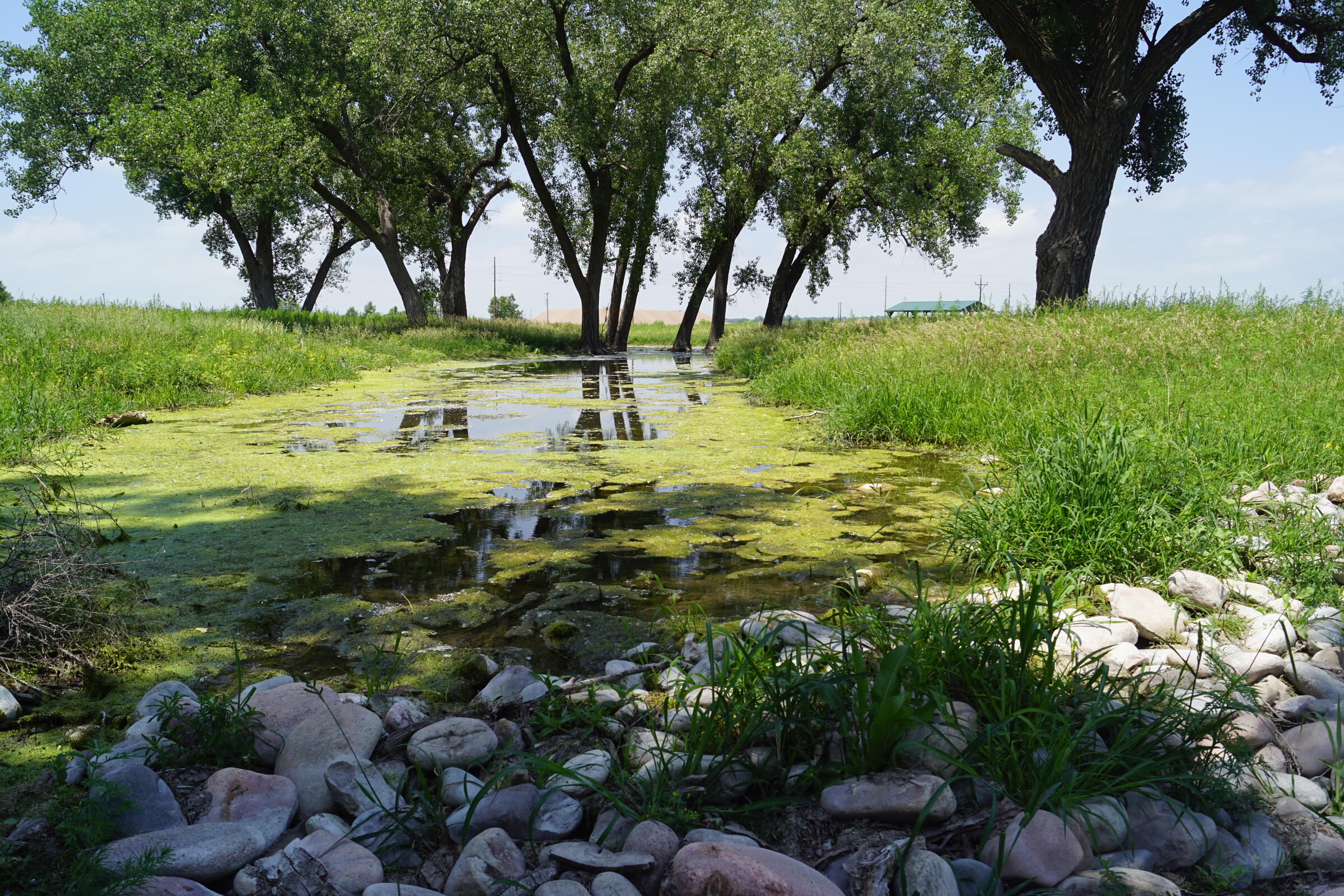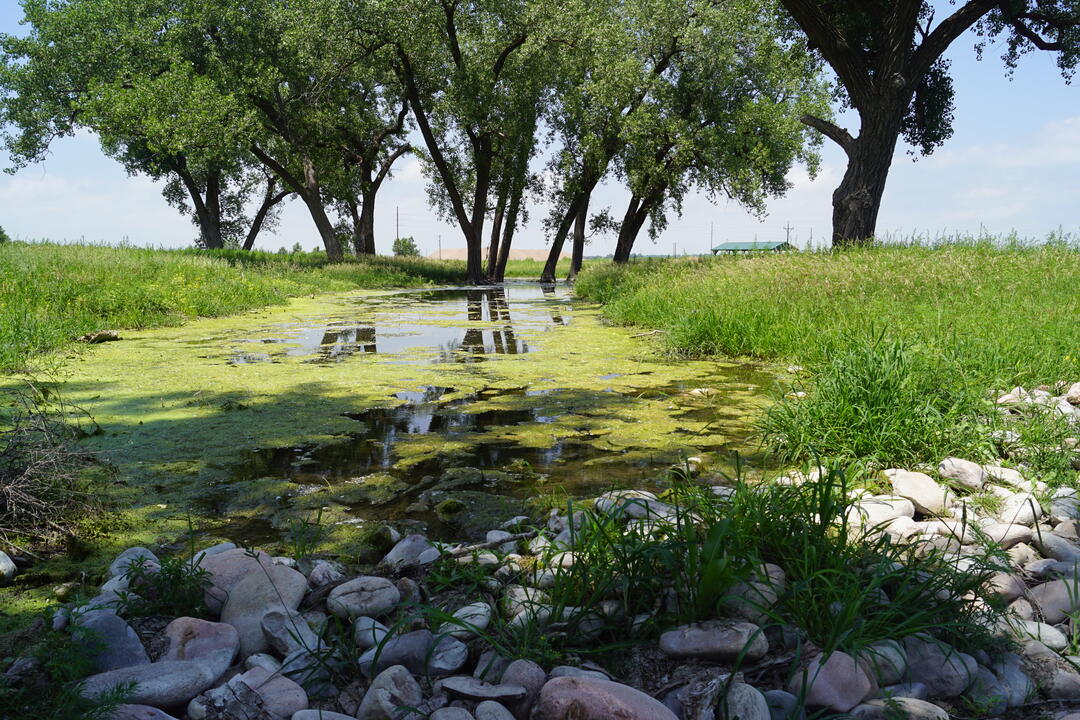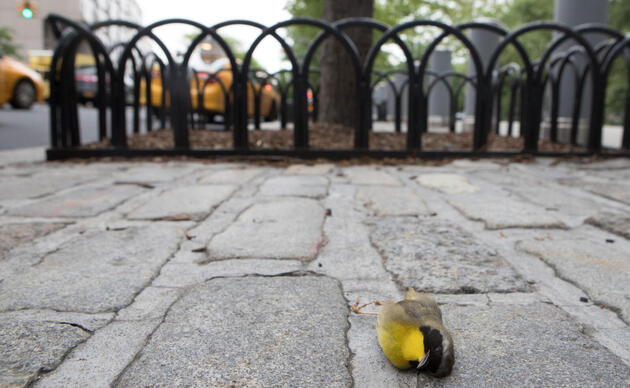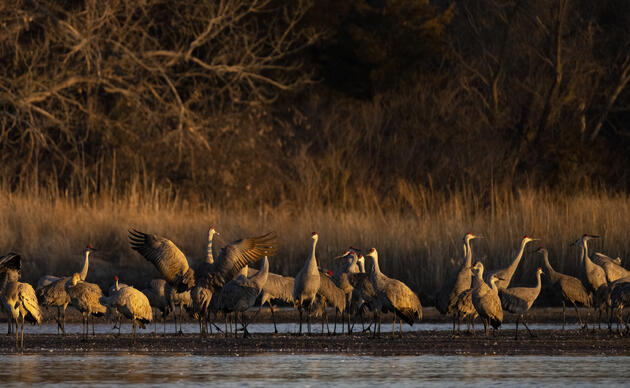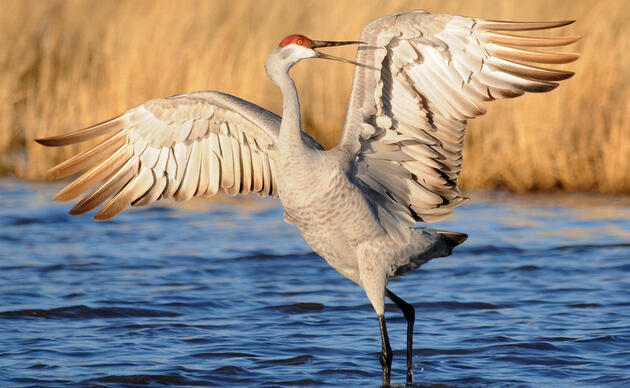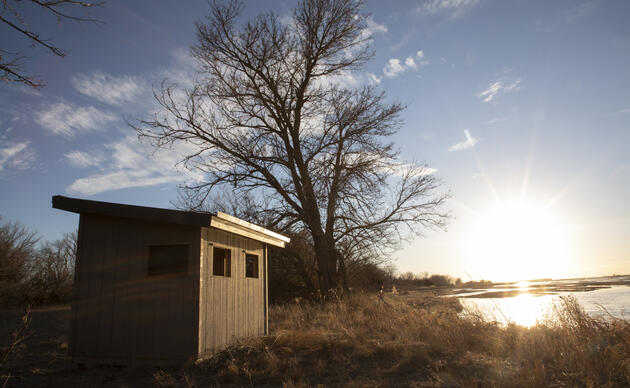The core tenant of Audubon's Rowe Sanctuary's education mission is to connect people to nature through experience based learning and personal interactions with the Platte River ecosystem. During the construction of the new Kearney High School, Kearney Public Schools reached out to Rowe Sanctuary for advice on the creation of an outdoor classroom at this new school. Audubon saw this as an opportunity to bring our unique style of nature based education into the community of Kearney. Together Rowe Sanctuary and KPS sought to create an 18 acre outdoor classroom that would provide some of the best opportunities for an education in nature across the state of Nebraska.
Project funding was sought from the US Environmental Protection Agency and the Nebraska Environmental Trust. The location chosen for the outdoor classroom was near Turkey Creek, a channel of the Platte River, and showed great potential for the creation of wetlands and wet meadows along the banks of the creek. The US EPA had special interest in creating wetlands to help filter the parking lot runoff and geothermal heating and cooling system from the school as those water sources drained to the Turkey Creek. This would also provide an opportunity to educate young adults about the importance wetlands play in natural systems as filters. Project partnerships were secured from the Nebraska Game and Parks Commission and US Fish and Wildlife Service with project planning beginning in 2016.
Intial assesment showed that the site was largely dominated by non-native cool season grasses, such as Smooth Brome, and the woodland had a heavy Eastern Red Cedar understory. The pond that had been constructed to hold water from runoff was draining directly into Turkey Creek causing erosion issues. To begin restoration efforts 5 acres of trees were thinned, removing cedars and small trees to create a open understory cottonwood savannah. Following this, a total of 1800 linear feet of wetlands were excavated in two separate locations, one forming an ephemeral wetland that would only have water when the holding pond was high or with rainfall. The second wetland slowed the discharge of water from the pond into Turkey Creek and included erosion control structures. Finally, the entire site was prepared for reseeding with a high diversity, local ecotype seed mix from Prairie Plains Resource Institute that included 250+ native plant species.
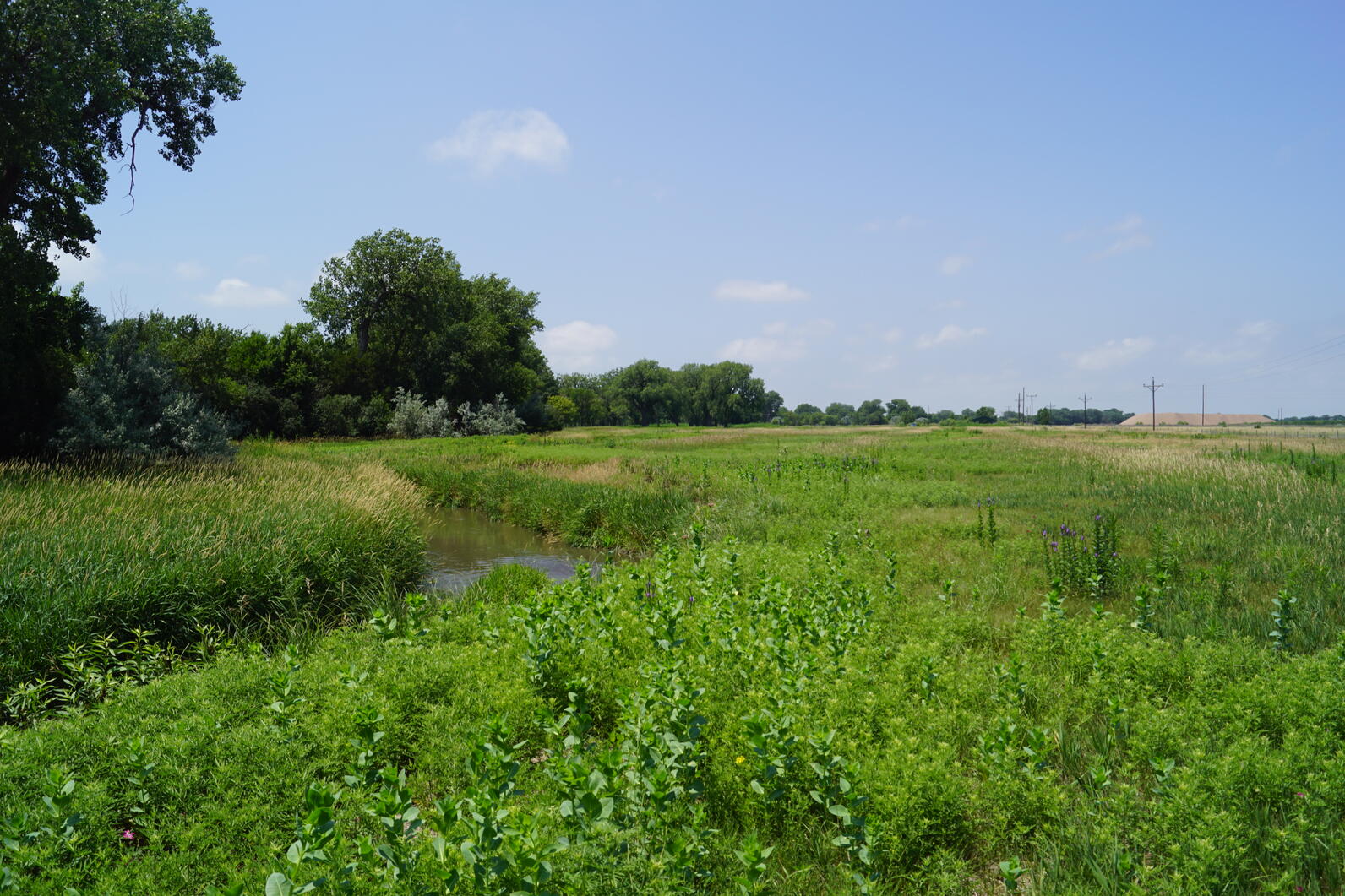
Upon the completion of restoration, Kearney High School students at the school officially named it the Kearney Outdoor Learning Area (KOLA) and began the creation of logos and signs for the site. Many students have already reaped the benefits of this outdoor classroom as teachers at the school hold experiments and demonstrate ecological concepts at KOLA. Many other classes utilize the area as well for its beauty and the ability to leave the classroom for a new perspective. KOLA is not just for KPS students however. It was designed to be a resource for the entire community of Kearney to experience Nebraska's nature. KOLA is a place for Nebraska's wildlife and it's people to come together.
The University of Nebraska has especially taken advantage of KOLA's potential to provide a space for education. They have collaborated with the Platte Basin Timelaspe Project to install a timelaspe camera overlooking the wetland, installed trail cameras to monitor wildlife use, placed a gauge to measure changes in the flow of Turkey Creek, and drilled groundwater monitoring wells for groundwater testing on site. The groundwater monitoring well also reports real time depth to groundwater measurements allowing anyone to monitor and learn about the changes in groundwater depth throughout the year. This report can be found at: https://snr.unl.edu/data/water/groundwater/realtime/individualwell.aspx?wellid=68. KOLA has been utilized for many other projects as well, showing the benefit of the site not just to Kearney Public Schools but to the greater scientific community.
How you can help, right now
Book A Tour
Tour reservations open online on Thursday, January 8, 2026, at 9:00 am CST. One of the greatest wildlife spectacles in North America, this gathering of cranes is the largest in the world.
Crane Season Programs and Events
This year for crane season, you can now book special events and programs in addition to your guided viewing experience.
Crane Season Information
Plan your visit. Whether you’re interested in programming, photography, or a guided tour, there’s something for everyone.

